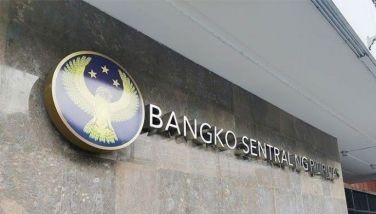Special Report: A new era for SMC
MANILA, Philippines - As chief executive and now single biggest shareholder of one of the biggest conglomerates in the country, Ramon S. Ang now has a bigger stake in seeing San Miguel Corp. (SMC) succeed in its undertakings.
When SMC chairman Eduardo ‘Danding’ Cojuangco Jr. sold his remaining 11- percent stake to Ang, his long-time trusted ally, on “friendly terms,” many wondered what he had in mind.
But to those who know Cojuangco and Ang, known in business circles as RSA, and the relationship they had nurtured for more than three decades, the sale, which catapulted Ang to becoming the new majority shareholder of SMC, came as no surprise.
The sale happened after Top Frontier, a company whose key players include Ang himself, Roberto “Bobby” Ongpin, Joselito Campos and Inigo Zobel, decided to no longer exercise the remaining option given to it under a 2009 agreement by Cojuangco to acquire the latter’s stake in SMC.
Top Frontier, which already owns over 60 percent of SMC’s common shares, believes it has enough shares in the diversified conglomerate and purchasing the remaining 11 percent owned by Cojuangco was no longer necessary.
And so Ang acquired Cojuangco’s remaining stake in SMC, consisting of 493.4 million shares, at P75 per share for P37 billion, which would give Ang an 11-percent stake in SMC. This, of course, excludes his indirect stake in SMC via his part ownership of Top Frontier.
According to Ang, Cojuangco offered the balance of the option shares to him and that he accepted because the San Miguel vision set by management during his term is far from being achieved, and because he has a continuing commitment to Cojuangco, the company’s shareholders, and the employees to see through the realization of this vision in the near future.
For his part, Cojuangco described Ang as “a person in whom I have full trust and confidence and rightfully deserves utmost recognition for transforming the company into a highly diversified and profitable business conglomerate.”
“From the time I requested Ramon to join me in the company, he has continuously dedicated 100 percent of his time and effort in ensuring the growth of the San Miguel Group to the benefit of its shareholders,” Cojuangco added.
The rise of RSA
It was during the late ‘1970s when Ang was introduced to Cojuangco through the latter’s eldest son Mark, who like Ang was also into cars and racing. When Cojuangco took over the helm of San Miguel, he immediately recruited Ang and the rest is history.
From being basically a dominant food and beverage company, SMC is now into power, fuel and oil, infrastructure, mining, telecommunications, banking, airlines, and airports. SMC is targeting to rake in P1 trillion in sales by 2013, or double its 2011 level, as these new acquisitions and investments start to contribute to earnings.
Sources say that while initially, Cojuangco’s children could not see the wisdom behind the huge trust and confidence given by their father to Ang, with the tremendous growth and success that SMC had experienced, now, everything is very clear. Ang had the business acumen to run San Miguel, so why rock the boat when the captain has a very clear vision and gameplan on how to reach the destination?
Cojuangco was able to cash in on his investments, and the funds he can leave to his children. But at the same time, he was able to make sure that the company he loved so dearly is in safe (and efficient) hands by making Ang not only manager but also majority owner.
Observers also note that with Cojuangco no longer an owner of SMC, although he remains chairman, the political stigma that has hounded him (with his association with the Nacionalista Party, his failed political bid, and the long battle with the PCGG) and SMC as a consequence will finally be removed.
Leadership changes
It was in 1890 when Don Enrique Ma Barretto de Ycaza established the brewery, Southeast Asia’s first, as La Fabrica de Cerveza de San Miguel. He named the company after the section of Manila in which he lived and worked. He was soon joined by Don Pedro Pablo Roxas, who brought with him a German brewmaster. San Miguel’s brew won its first major award at 1895’s Philippines Regional Exposition, and led its imported competitors by a five-to-one margin by the turn of the 20th century. The company was incorporated in 1913 following the death of Don Pedro Roxas.
By that time, San Miguel was exporting its namesake brew to Hong Kong, Shanghai and Guam. Andrés Soriano y Roxas joined San Miguel in 1918, beginning a multi-generation reign of the Sorianos. Soriano created the first non-US national Coca-Cola bottling and distribution franchise in 1927. The Philippine company owned 70 percent of the joint venture, which grew to become Coke’s sixth largest operation. By the early 1990s, San Miguel had captured over two-thirds of the domestic soft drink market.
The company shortened its name to San Miguel Corp. in 1963, and Andrés Soriano, Jr., advanced to the company’s presidency upon his father’s death in 1964 .
In 1983, a Soriano family proxy fight led to the purchase from Enrique Zobel, cousin of the Sorianos, of a 19.5-percent stake in SMC by Cojuangco, who would assume the company chairmanship the following year following the death of Andres Soriano Jr.
But the People Power revolution forced Cojuangco to go into exile in the United States. The government then sequestered 51.4 percent of the company shares and Andrés Soriano III assumed the company chairmanship.
In 1998, Soriano resigned and Cojuangco was elected chairman of SMC. Francisco Eizmendi Jr. stayed as president and Ang was elected vice-chairman in January 1999. Ang would later be appointed president and chief operating officer following the retirement of Eizmendi in 2002.
Expansion binge
Under the leadership of Cojuangco and Ang, the company has undergone a major strategic shift, streamlining and broadening its business portfolio, reshaping and redefining the very nature of its core businesses. While the company has significantly expanded its participation in its core business of food, beverage and packaging through regional acquisitions and integration, it has also made inroads into the power, mining, petroleum, infrastructure and telecommunication industries.
In rapid succession beginning late 2008, SMC bought shares in power retailer Meralco, paid up for the option to own oil refiner Petron, and acquired a majority stake in Liberty Holdings, a Filipino telco co-owned by Qatar Telecom.
Forays into infrastructure have also been successful, with San Miguel now participating in several large-scale projects. Phase 1 of the P19-billion, 88.5 kilometer two-lane Tarlac Pangasinan La Unión Expressway (TPLEX) began in April 2010 and will take two-and-a-half years to complete. In October 2010, SMC finalized a deal to acquire 51-percent interest in Universal LRT Corp. Ltd., the company in charge of developing the Metro Rail Transit Line 7 (MRT7).
To Ang, the need for significant infrastructure development throughout the Philippines represents an important growth opportunity for San Miguel, not just for profit, but a chance to contribute to nation-building.
San Miguel’s energy and power portfolio is just as impressive. In a relatively short period, the company’s energy subsidiary San Miguel Energy has become the largest power producer in Luzón and a state-of-the-art platform on which to further build their power business. Already, San Miguel Energy and its umbrella unit, San Miguel Global Power Holdings, is an important engine for growth for SMC, capable of yielding double-digit returns annually.
Mining is another industry that Ang has been keen to enter. In early October 2010, SMC bought a little over a 10th of Australia’s Indophil Resources NL, a company which owns a 37.5-percent stake in the Tampakan copper-gold project which covers the provinces of South Cotabato, Davao del Sur and Sultan Kudarat and has a total resource estimate of 2.4 billion tons. Estimated at $5.2 billion, the Tampakan mining project is the Philippines’ largest.
In April 2012, SMC bought a 49-percent minority stake in Philippine Airlines (PAL) Holdings, worth $500 million, to revitalize PAL and Air Philippines and help in their refleeting program. SMC has also expanded its oil and energy business with the purchase of Esso Malaysia Berhad (65 percent), ExxonMobil Borneo Sdn Bhd (100 percent) and ExxonMobil Malaysia Sdn Bhd (100 percent) for $577.3 million.
Bigger challenges
But this is just the beginning. Ang has said he will participate in all infrastructure projects which the government will put up for bidding under its Public-Private Partnership (PPP) program. He has also indicated his interest in the broadcasting industry.
Probably one of the biggest, if not the biggest challenges facing SMC and Ang now is how to improve PAL’s competitiveness in an age when low-cost carrier (LCCs) or so-called budget carriers rule. But people working with him are confident that given his hands-on style of management and his keen attention to details, Ang, president of PAL, has everything figured out.
Ang has definitely gone a long way – from importing and selling high-end cars and engines during his younger days to managing and now owning one of the country’s most valuable group of companies. But the passion to excel, to make things work, to create value, remains the same, albeit on a higher level.
- Latest
- Trending


























